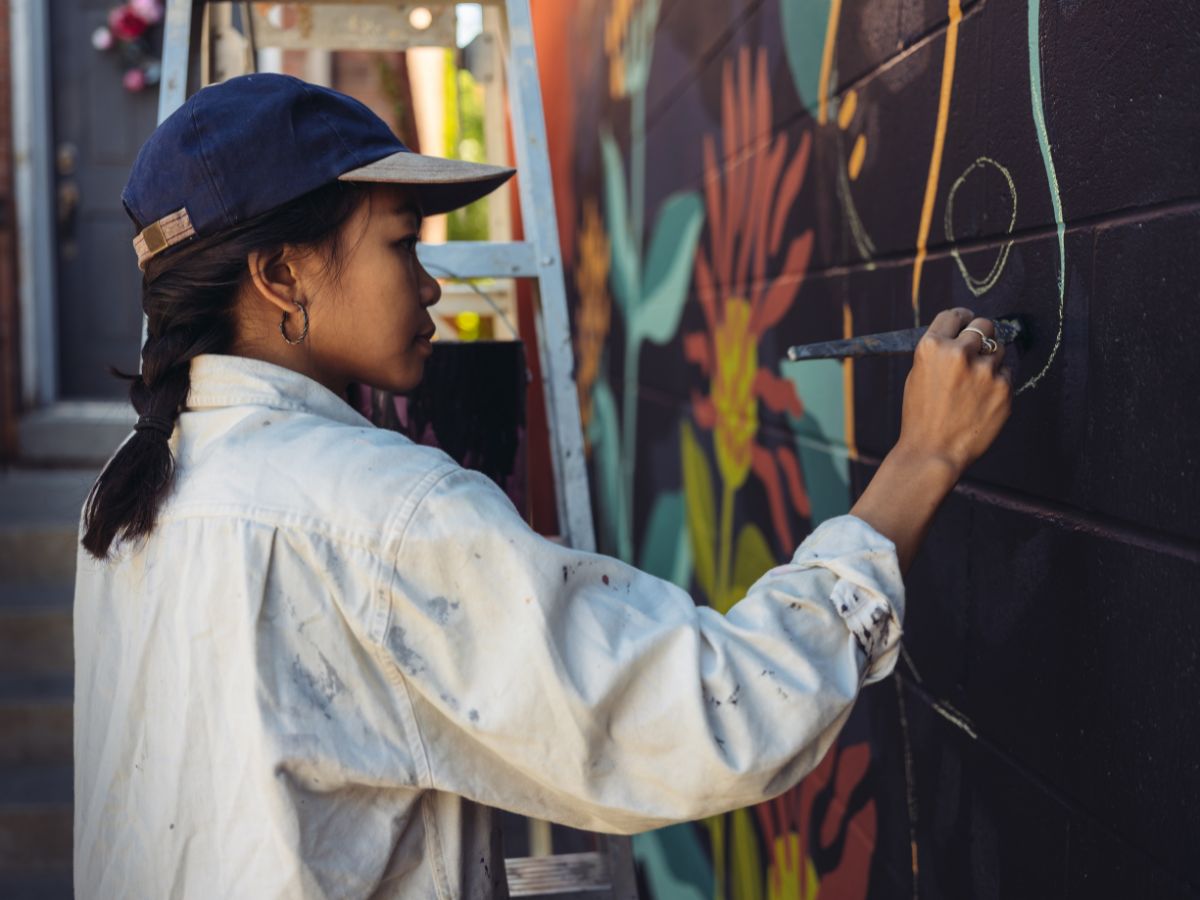
How Muralists Can Land Steady Work
If you love painting big, making walls come alive, and seeing work out in the public, then this is for you. Consistency in mural work isn’t a mystery. It’s a combination of smart prep, visible presence, professional habits, and relationships. Here’s how you, whether amateur or pro, can build a steady flow of mural jobs.
1. Build a portfolio
Even small walls or mock-ups help. Paint practice panels, use plywood or large rolls (if walls aren’t available), and photograph everything such as finished work, in-progress shots, even mistakes. Use these to refine your style. Clients often pick muralists who have a recognizable voice. If you paint mostly bold abstracts, or textures, or lettering, lean into what makes your work distinct.
2. Mock-ups and showing possibilities
You don’t always need the wall first. Mock up your design over photos of blank walls (even take photos of buildings in your neighborhood). Use digital tools to show what your work would look like. This helps clients imagine the final result. It also shows you’re thoughtful, prepared, and serious.
3. Be easy to find and reachable
Make sure people can contact you. Have an email address, phone, or form on your website. On your Instagram/Facebook, make “muralist” a tag in your bio. List location (city, region), so people in your area see you. No vague “will travel for work” without a clear base, it often turns people off. Visibility is key.
4. Network
Many murals come from connections. Talk to local business owners, community center directors, café owners. Let them know you do murals. Sometimes you can get work by simply walking past blank walls and asking if they’d like art there. Also, get involved in mural festivals or public-art projects. Even unpaid or modestly paid ones offer exposure that leads to paid work.
5. Clear pricing, contracts, and professionalism
Clients trust artists who act like businesses. Know your costs (paint, lift/scaffolding, permits, travel, time). Set your fees based on how complex the design is, how many days it will take, materials, etc. Don’t underprice just to get the job. Use contracts. Be timely in replies. Be reliable. That will get referrals and repeat work.
6. Keep showing up and documenting
Even when work is slow, keep creating. Keep posting recent murals, work-in-progress, and process shots. Let people see you at work. Trails of your journey attract clients. Also, collect testimonials. The people who saw your mural in their area, neighbors, business owners. Word-of-mouth is powerful.
7. Outreach and cold pitching
Don’t wait for opportunities to find you. Find blank walls, take photos, pitch your design and idea to the wall owner. Reach out to city arts programs or nonprofits. Sometimes institutions or councils have wall-spaces or public art funding but need artists. Introduce yourself, show sample work, drop mockups, express what you’d bring.
Consistency doesn’t come overnight. It comes from showing up, refining what you do best, making yourself easy to find, charging what you deserve, and treating your mural art like both craft and business. If you keep at it, you’ll see the gigs build up, and reputations strengthen.
